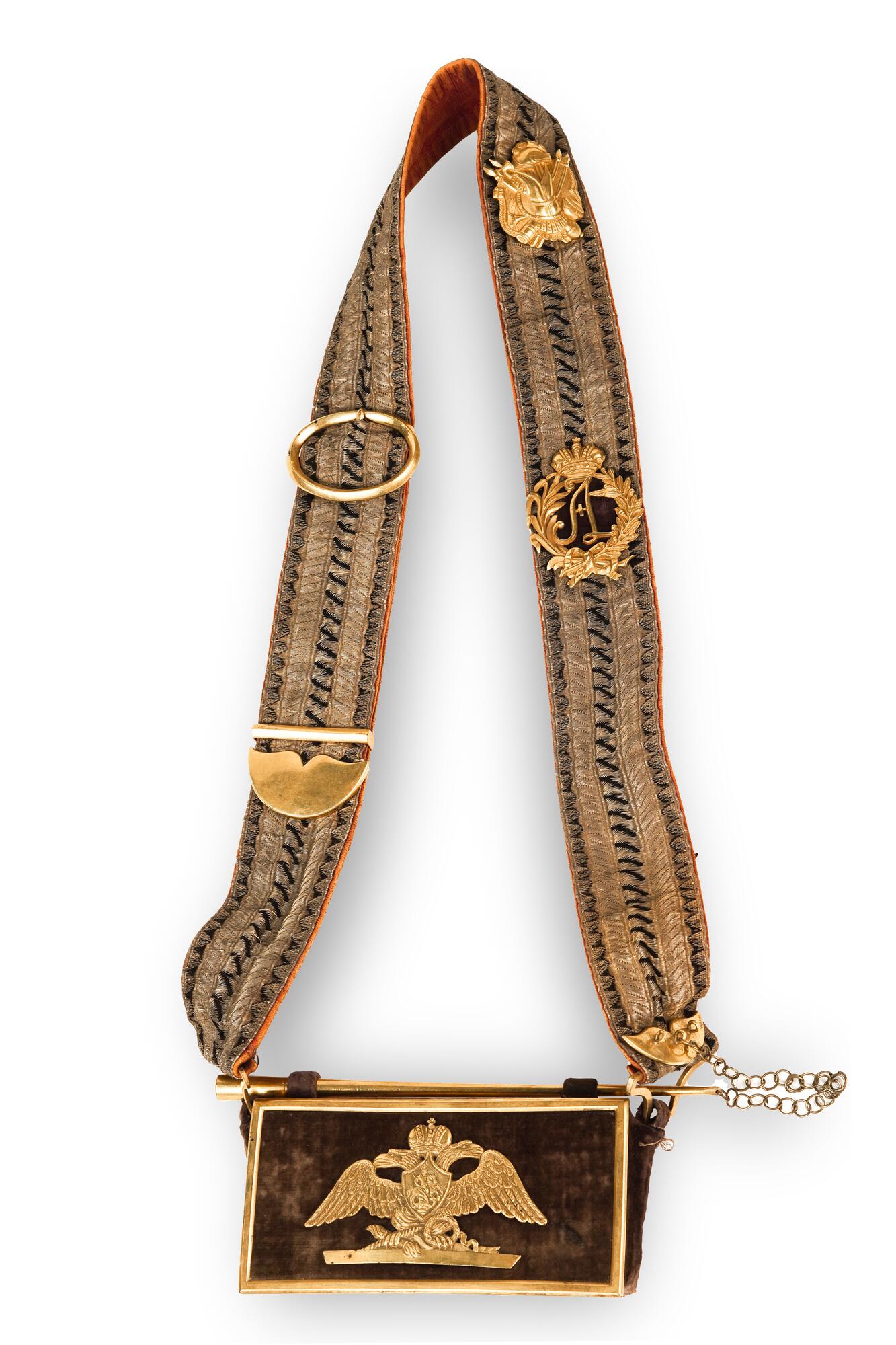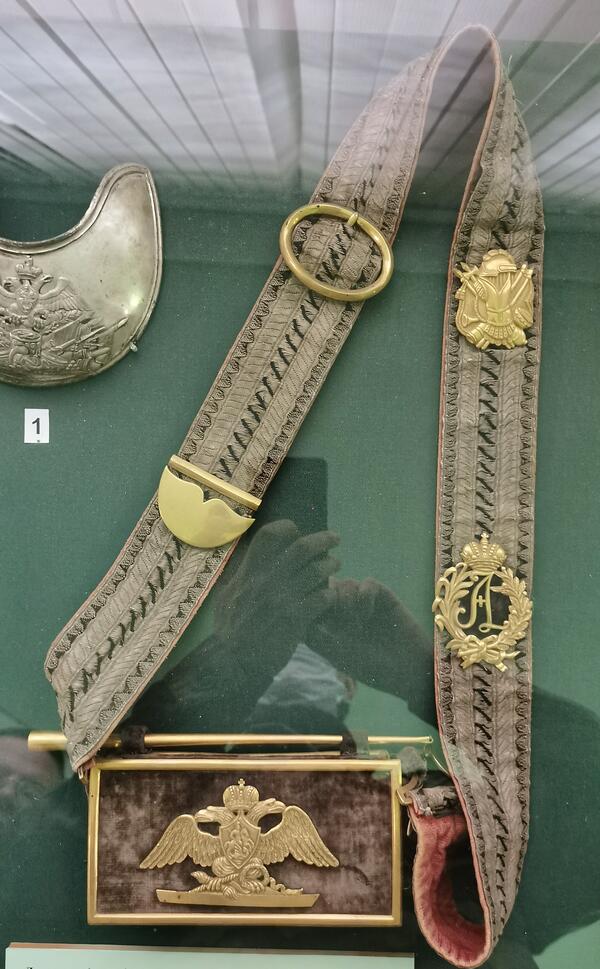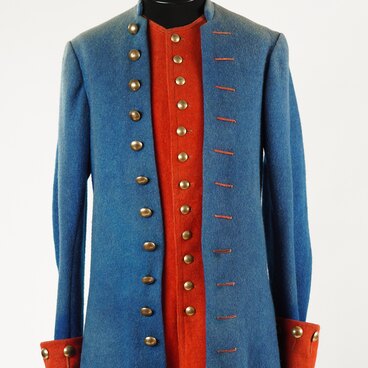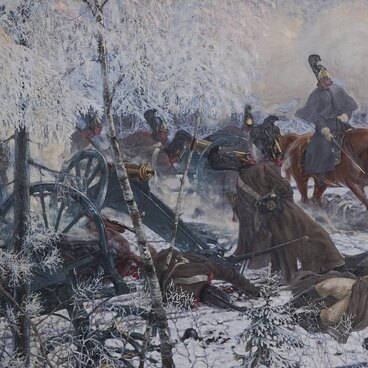A cartridge box, or a lyadunka in Russian (from the German Ladung — literally “charge”) was a small bag or box for storing ammunition which was included in military equipment.
Depending on the type of troops, the cartridge boxes differed in material, color and size. The first cartridge boxes appeared at the same time as the field regiments of dragoons; before that, a “wine lyadunka” was called a flask.
Such bags were hung over the left shoulder on a special belt called a baldric. On the right side of the belt, the bags were fixed in such a way that the buckle was at the back. In the infantry, a larger ammunition pouch (that could fit the cartridges of a specific size) was used instead of the cartridge bag.
Priming tubes were carried in artillery cartridge boxes; hence they were nicknamed “tubular boxes”. These were brass boxes with a hinged lid, which were attached to a waist belt.
The boxes for elite grenadier soldiers were decorated with an image of a burning grenade.
The Cossacks wore black leather straps on a belt (the ones for the Life Guards were red with silver threads and an eight-pointed star on the lid).
The Hussars kept ammunition for carbines, blunderbusses, pistols and revolvers in their boxes. The privates were supplied with boxes made of red Russian leather (bark-tanned cow leather) on a red baldric that could fit 20 rounds. Officers’ cartridge boxes had metal silver-plated or gilded lids with a heraldic eagle.
The officers’ cartridge boxes of the Life Guards Hussar Regiment were especially elegant: the lids, trimmed with blue Morocco leather, featured a gilded badge in the shape of the St. Andrew’s star. This regiment was formed in 1796 from the Life Hussar Squadron of Catherine II and the Gatchina regiments (the Hussars and Cossacks) of Grand Duke Pavel Petrovich. For distinguished military service in many military campaigns, it was awarded the St. George Standard with the St. Andrew’s jubilee ribbon, 22 St. George trumpets and insignia for headgear.
The cartridge box presented in the exhibition belonged to Alexander I. He ascended to the throne after a palace coup and the assassination of Paul I. Historians are ambiguous in assessing the results of his reign. During the reign of Emperor Alexander Pavlovich, Russia participated in military campaigns against the French (1805–1807), the Russo-Turkish (1806–1812) and the Russo-Swedish (1808–1809) wars, the Patriotic War of 1812 and Foreign campaigns. The Russian conquest of the Caucasus also began under him.
At the beginning of the 20th century, the cartridge boxes remained an element of the ceremonial officer’s uniform.
Depending on the type of troops, the cartridge boxes differed in material, color and size. The first cartridge boxes appeared at the same time as the field regiments of dragoons; before that, a “wine lyadunka” was called a flask.
Such bags were hung over the left shoulder on a special belt called a baldric. On the right side of the belt, the bags were fixed in such a way that the buckle was at the back. In the infantry, a larger ammunition pouch (that could fit the cartridges of a specific size) was used instead of the cartridge bag.
Priming tubes were carried in artillery cartridge boxes; hence they were nicknamed “tubular boxes”. These were brass boxes with a hinged lid, which were attached to a waist belt.
The boxes for elite grenadier soldiers were decorated with an image of a burning grenade.
The Cossacks wore black leather straps on a belt (the ones for the Life Guards were red with silver threads and an eight-pointed star on the lid).
The Hussars kept ammunition for carbines, blunderbusses, pistols and revolvers in their boxes. The privates were supplied with boxes made of red Russian leather (bark-tanned cow leather) on a red baldric that could fit 20 rounds. Officers’ cartridge boxes had metal silver-plated or gilded lids with a heraldic eagle.
The officers’ cartridge boxes of the Life Guards Hussar Regiment were especially elegant: the lids, trimmed with blue Morocco leather, featured a gilded badge in the shape of the St. Andrew’s star. This regiment was formed in 1796 from the Life Hussar Squadron of Catherine II and the Gatchina regiments (the Hussars and Cossacks) of Grand Duke Pavel Petrovich. For distinguished military service in many military campaigns, it was awarded the St. George Standard with the St. Andrew’s jubilee ribbon, 22 St. George trumpets and insignia for headgear.
The cartridge box presented in the exhibition belonged to Alexander I. He ascended to the throne after a palace coup and the assassination of Paul I. Historians are ambiguous in assessing the results of his reign. During the reign of Emperor Alexander Pavlovich, Russia participated in military campaigns against the French (1805–1807), the Russo-Turkish (1806–1812) and the Russo-Swedish (1808–1809) wars, the Patriotic War of 1812 and Foreign campaigns. The Russian conquest of the Caucasus also began under him.
At the beginning of the 20th century, the cartridge boxes remained an element of the ceremonial officer’s uniform.





